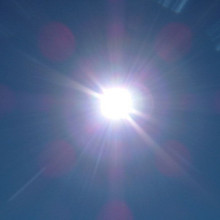We need exposure to sunlight in order to be able to make vitamin D. Does this mean that humans, like plants, undergo a sort of photosynthesis?
In this episode

00:00 - Is making vitamin D akin to human photosynthesis?
Is making vitamin D akin to human photosynthesis?
We put this question to Dr. Laura Tripkovic from Surrey University, and Professor Richard Cogdell from Glasgow University:
Laura - We need vitamin D to maintain our bones and to make sure we absorb enough calcium from our diet. One of the main sources to humans, radiation from the sun can penetrate the layers of the skin called the epidermis, while there's a chemical called 7-hydrocholesterol and this is observed through UV light and then will produce the pre-vitamin D molecule. And then because the skin is quite warm, this pre-vitamin D3 will spontaneously convert to vitamin D3 and the vitamin D3 will move from the skin, and will be pushed out into the capillary system, and into your blood system, so it can then be activated and used.
Hannah - So, human skin does make vitamin D using a photochemical reaction. How similar is this process to the photosynthesis are carrying in the chloroplasts of plants which uses the sun's rays to convert carbon dioxide into oxygen and carbohydrate?
Richard - My name is Richard Cogdell and I'm the Hooker Professor in Botany at Glasgow University. In vitamin D production, the wavelength of light which triggers that reaction or drives that reaction is the ultraviolet wavelength. So it's the wavelength that actually would burn you if you're out in the sun for too long. The wavelengths of light which drive photosynthesis are the wavelengths that give rise to the blue and red regions in the spectrum because it's light absorbed by chlorophyll. And so, photosynthesis is not driven by ultraviolet light. It's driven by a visible radiation in the blue and the red regions of the spectrum.
Hannah - So what happens during the winter months when the intensity of all wavelengths of sunlight hitting the UK decreases? Plants enter dormancy phase and use remaining carbohydrates stored up during the summer months but what happens to us humans? Back to Laura.
Laura - We can only have vitamin D3 here in the UK between the months of April and September. We can be out in the sun for about 10 to 15 minutes, three times a week, just around your face. You don't need to strip off, and this will see you through into early autumn. We now know that the half-life of vitamin D can be around a month. Now there are dietary sources of vitamin D that can support your levels during the winter time and they will be things like oily fish, like sardines and mackerel, there's a little in eggs, if you like shitake mushrooms it's in there, and there's also little bits added into breakfast cereals, milk, and soya milk and things. But you need to check the label to see if they're actually in there.










Comments
Add a comment